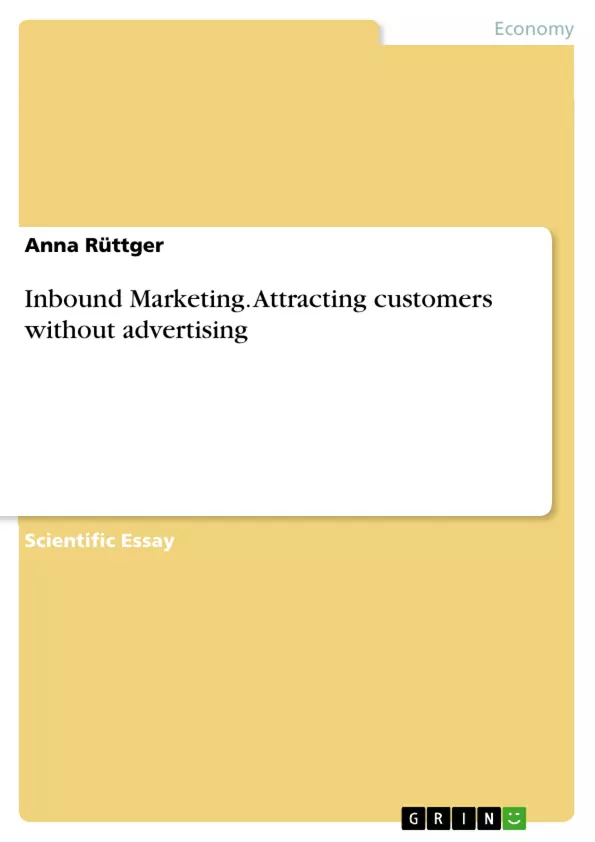What does Inbound Marketing mean? This paper will introduce you to this term, give examples and simply give an overview how to do marketing nowadays.
The goal of marketing is to capitalize on the brand as well as products and services of a company with the result of a better selling and even further more turnover or profit.
Among the number of Internet users, which has risen sharply over the past years , people spend more time using the Internet and are more wiling to make purchases online. As a result, companies need to adapt to their customers behaviour and have to focus on the Internet.
Traditional marketing, otherwise known as outbound marketing is the most common way of marketing people are confronted with every day. It is often presented on advertisement boardings, in TV commercials, even on a banner advert on the Internet.
The problem is that outbound marketing focuses on the company’s product or service, which means that the target group of the company is not purposefully being attracted.
This leads to the fact that the addressee may not be in need of the product or service, therefore they will not be interested in buying the product.
On top, the consumer usually gets interrupted by advertising. For example when driving the car, when reading the newspaper or when playing games on a smartphone.
As a result people are annoyed by advertisement and subconsciously learn to ignore them. According to official statistics, „82% of Americans ignore online ads."
This leads to the company’s problem of not reaching their customers anymore by traditional marketing.
Table of Contents
- 1 Definition of Inbound Marketing & Differences Between Inbound- & Traditional Marketing.
- 2 Example
- 3 The Influence of Inbound Marketing on the Relationship Between a Company and It's Customer
- 4 Advantages and Disadvantages
- 4.1 Advantages
- 4.2 Disadvantages
- 5 Bibliography
Objectives and Key Themes
This paper aims to provide a comprehensive overview of inbound marketing, exploring its definition, key differences from traditional marketing, and its impact on the customer relationship. The paper will also analyze the advantages and disadvantages of inbound marketing.
- Definition and characteristics of inbound marketing
- Comparison between inbound and traditional marketing approaches
- Impact of inbound marketing on customer relationships
- Advantages and disadvantages of inbound marketing
- Practical application of inbound marketing strategies
Chapter Summaries
Chapter 1 defines inbound marketing and differentiates it from traditional marketing methods. It examines the changing landscape of online consumer behavior and the limitations of outbound marketing in reaching target audiences. The chapter introduces the concept of inbound marketing as a more effective approach, focusing on attracting customers through valuable content and engaging experiences.
Chapter 2 provides a practical example of how inbound marketing can be applied to a specific scenario. It illustrates the implementation of inbound marketing strategies, demonstrating the process of attracting visitors, converting them into leads, and ultimately winning them as customers. The chapter highlights the importance of creating high-quality content and utilizing digital channels to reach the desired audience.
Chapter 3 delves into the influence of inbound marketing on the relationship between a company and its customers. It explores how inbound marketing strategies foster trust, build relationships, and create a positive customer experience. The chapter discusses the importance of providing value to customers through relevant content, personalized communication, and consistent engagement.
Keywords
Inbound marketing, outbound marketing, digital marketing, content marketing, customer relationship management, customer engagement, online advertising, social media marketing, search engine optimization (SEO), marketing automation, website analytics, lead generation, customer conversion, brand awareness, customer loyalty.
- Citar trabajo
- Anna Rüttger (Autor), 2015, Inbound Marketing. Attracting customers without advertising, Múnich, GRIN Verlag, https://www.grin.com/document/319778



